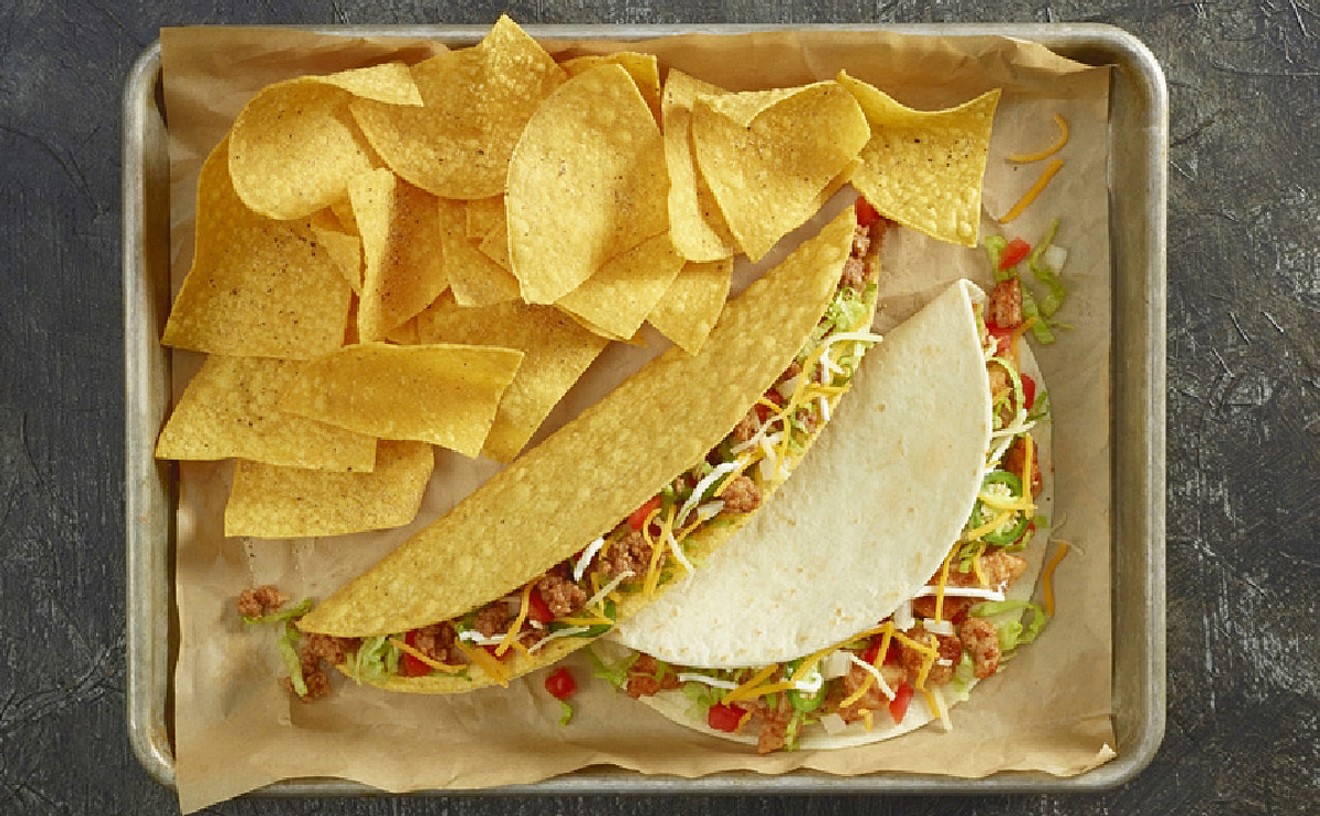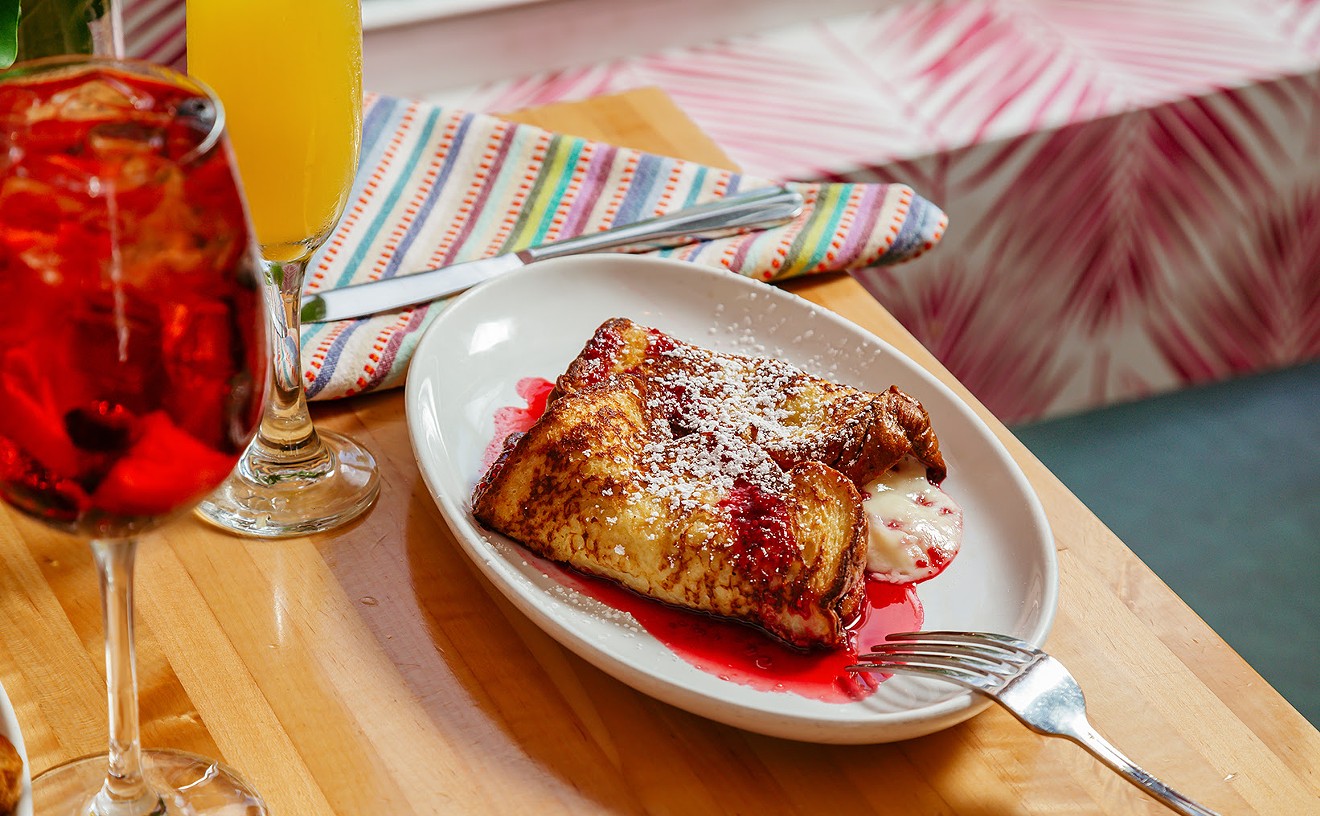Still the urge is hard to squelch without at least an occasional scratch, even when you know scratching is counterproductive, adding injury to insult. Deep down, everyone (including myself) ranks restaurants -- or not so deep. I can't remember the last social occasion when someone hasn't asked what's the best eatery in town, and then, regardless of my response, immediately answered his/her own question.
And one thing I've most noticed over the years is that people (including me) tend to rank Italian food according to an entirely different set of rules than any other kind of ethnic cuisine, almost as though Italy were located in a different universe than France or Spain or Japan. Spanish chefs can garner kudos for turning a tortilla into three piles of egg, onion, and potato-flavored foam. No one judges Nobu as a lesser sushi bar because there may be mango in the makis. With America's Italian restaurants, though, it's always: "It's nothing like the fab fritto misto I had in that little trattoria I found on a back street in Siena" -- or Bassano di Grappa or Pitigliano; the smaller and less known, the better. Italian food brings diners to Kill Bill rage levels if it isn't "authentic," meaning traditional and, preferably, cooked by the proprietor's aging mama.
And absolutely the worst diss on an Italian eatery, in the U.S. or in Italy, is that it is French-influenced, a signal of fussy fake food (especially to reality-show diners). Michelin stars are kisses of death.
In the more than ten years since opening in a small, promisingly easy-to-miss South Beach storefront, Escopazzo has often been termed our town's "Best" Italian eatery, and also authentically Italian. Molto simpatico owner Pino Bodoni does hail from a Roman restaurateur family. It is his talented wife, Giancarla, however, who has ruled the kitchen with a highly personal touch since 1997, and a new menu introduced in April is packed with dishes dramatically different from any that diners are likely to have had in Italy.
To avoid unfair disappointment, therefore, it's best to judge Escopazzo's dishes as one would its eccentric wall mural depicting Florence's Arno bridge, the Ponte Vecchio, next to the Roman Coliseum. That is, on their own individualistic merits, building on Italian classics rather than being them.
The menu does have some traditional-sounding selections. And on a first visit, still in the grip of that mamma mia syndrome, I focused mainly on those. In terms of authenticity, though, some were and some weren't. Tagliatelle al rosmarino con ragu alla Bolognese was gratifyingly like those I've had in Bologna, sauced with a rich ragout that was boldly beefy -- a far cry from the hamburger-spiked tomato sauce that passes for Bolognese ragu in Italian-American eateries. And the housemade pasta was authentically wide, flat tagliatelle, as served at the source. (In Bologna, "spaghetti Bolognese" is an exotic American import.)
Red pepper-spiked spaghetti alle vongole veraci, on the other hand, was not the real stuff. It was spaghetti, all right, and nicely al dente; garlic was appropriately plentiful, too. But vongole veraci, or "true clams" (caparossoli in the dialect of Venice, where they are a specialty), are a very specific species whose exquisitely etched shells -- the sepia-colored geometric designs resemble pen-and-ink drawings -- are matched only by the tiny bivalves' subtle delicacy. Escopazzo's vongole were common Manila clams, much bigger, chewier in texture, and coarser in taste. Admittedly water pollution has made vongole veraci hard to find even in Venice. But that's no excuse for raising false hopes by calling a dish something it is, in fact, not. The pasta was also extremely oversalted. And while the briny bottarga (mullet roe) ordered on top for an extra $3 didn't help this condition, neither was it the chief culprit.
Escopazzo's strong suit is actually its more creative combinations, particularly those on its antipasti and carpacci lists. Carpaccio di manzo, accompanied by a salad of mushrooms and Parmesan cheese, wasn't dressed only with olive oil like most of Miami's beef carpaccios, but with a truffle-infused citrus vinaigrette, for a welcome earthy contrast. An inventive carpaccio di ipoglosso e tonno (thin-sliced Alaskan halibut and bigeye tuna) was topped with an Asian-inspired dressing of miso and cashews, the sort of thing one always hopes for when one orders tuna tataki in Japanese restaurants ... and instead gets a bottle of soy sauce for dipping. And carpaccio di agnello was a showstopper, the pepper-crusted lamb slices seared, not raw but still rare, accompanied by a crisp-breaded dollop of goat cheese and dotted with 25-year-old balsamico. Even the recipe's tiny dribbles of seductively sweet/tart vinegar made me swear to never buy $4.99 supermarket balsamic vinegar again -- or might have, had I a spare $100 or so for a bottle of the aged real thing. The dish was a definite plate-mopper. Fortunately Escopazzo's bread, particularly an intense tomato version, was excellent.
Over the course of four meals there was always a fried battered vegetable dish on the menu, but it changed. Fritto misto proved irresistible on a first visit, owing to the inclusion of two nonstandard ingredients, fresh sage leaves and amaretti -- yes, almond macaroons -- among the usual suspects (zucchini, asparagus, sweet potato, and artichoke). The sage, often used to spice Italian dishes but seldom on its own, was terrific in light, crunchy batter. The deep-fried cookies also worked, in a weird way, and certainly made dessert unnecessary. On a later visit the mix was replaced by fritelle di carciofi e mozzarella, a sort of combination of mozzarella in carrozza (or fried in bread) and Rome's famed spring specialty, carciofi alla Giudia -- but with the fried artichokes bite-sized instead of whole, and a bracing, basil-flecked tomato coulis to balance the breading.
Sformatino di asparagi is an Escopazzo perennial, but don't miss this smooth flan, which came garnished with fresh asparagus spears and numerous thin slices of luxe black truffle. Its bath of mixed-cheese "fonduta" was not a heavy cheese sauce but a light, whipped cream-textured foam that almost seemed cutting-edge New Spanish.
Entrées were hard to resist (especially for a carnivore, since all meats are from free-range, grass-fed animals). But I must admit that in Italy I most often make a meal of starters and pastas, and so it went at Escopazzo. When it came to visit number four, I reluctantly, despite a tempting lemon/truffle aroma, rejected the remarkably juicy-looking Neiman Ranch pork chop being inhaled by a diner at the next table, in favor of another starter that was pure critic catnip. What restaurant reviewer could have turned down fegato grasso in tre preparazioni, when one of the three baits was a slab of deep-fried, hazelnut-crusted foie gras, with a conserve of plums and chocolate?
It was actually much better than it sounds; not at all cloying, the tangy fruit and cocoa made perfect bittersweet sense. Salt curing that balanced butteryness with brine gave a second chilled slice on bruschetta more character than mild cold foie normally has. The third item, a goose liver lobe pan-seared rare with a rich caramelized pear and port wine sauce, was also good, though similar to many nouvelle cuisine foie gras preparazioni I've had in -- I hesitate to say it -- France. But the audaciously free-wheeling wholeheartedness of the trio made the dish tremendously Italian in spirit. The rest of the restaurant is, too.









